Soccer newsletter: U.S. Soccer exposes holes in USWNT’s equal pay argument
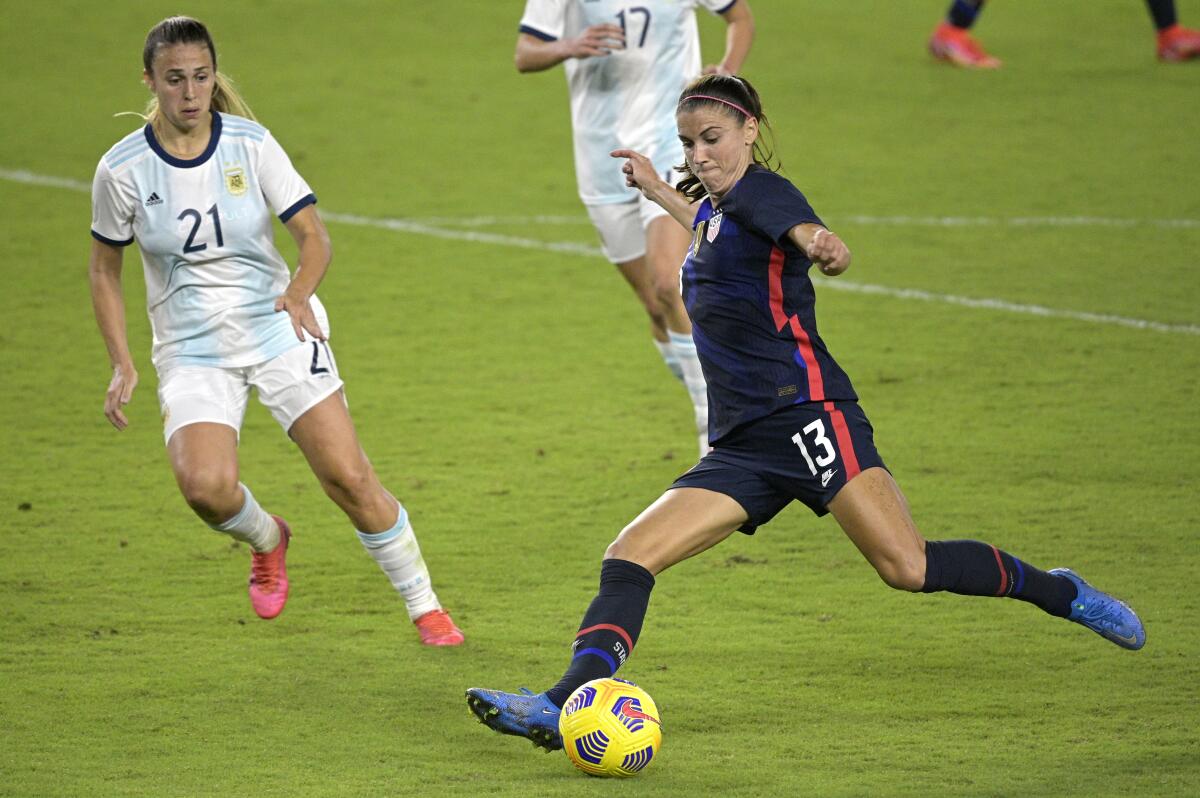
- Share via
Hello, and welcome to another edition of the L.A. Times soccer newsletter. I’m Kevin Baxter, The Times’ soccer writer, and we start today with a new development on an old topic.
In 2019, just before departing for a World Cup it won, the women’s national team sued U.S. Soccer alleging gender discrimination in wages and working conditions based on collective bargaining agreements the federation had negotiated separately with the men’s and women’s teams.
The federation won a partial victory in federal court last year when a judge threw out the pay aspect of the suit, but U.S. Soccer still is getting routed in the court of public opinion. So last week it went on the offensive and offered to negotiate a new CBA that would cover both the men’s and women’s teams and thereby guarantee equality.
Not so fast, the women answered in clumsily tipping their hand. Turns out they may not have been as interested in equal treatment as they were in the power, leverage and publicity their lawsuit gave them.
Alex Morgan spoke for the team when she said, in essence, equal wasn’t good enough.
“We need to look line by line at what they’re actually providing because if you have equal but it’s not even what we got before ... then we still consider that to be not good enough,” she told Anne M. Peterson of the Associated Press.
Huh?
Did Morgan really say if being equal means giving something up, forget it? If you have to give something up to achieve equality, isn’t that a concession that you’ve been getting more than the other side all along?
Molly Levinson, a spokesperson for the women’s players’ association, muddied things even more with a statement of her own.
“[U.S. Soccer] has finally acknowledged that they pay women players less than men players,” she said. “USSF must correct this ongoing disparity by reaching an equal pay collective bargaining agreement and resolving the ongoing lawsuit.”
If the women truly were getting paid less than the men, wouldn’t Levinson and the players jump at the chance to sign the same CBA the men are getting? Of course. But all this posturing is about politics, not pay.
And it’s the wrong argument to make in any case. The women shouldn’t be asking the federation for equality. They should be asking for more.
Enjoying this newsletter? Consider subscribing to the Los Angeles Times
Your support helps us deliver the news that matters most. Become a subscriber.
This shouldn’t be about equal pay for equal work. It should be about getting rewarded for performance rather than penalized for it. And since the women are better, they should be paid more, an argument the lawyers representing the women appear to be making in their appeal of last year’s ruling.
The U.S. women have won four World Cups. The men didn’t even qualify for their last world championship and have made it as far as the quarterfinals just once in the modern era.
The women have medaled in six of the seven women’s Olympic tournaments and won gold four times. The men haven’t even qualified for four of the last seven men’s Olympic tournaments and have won just three Olympic games in that span. The women have ranked No. 1 in the world for 51 consecutive months. The men have not ranked higher than fourth, and that lasted just a few months.
Clearly the teams aren’t equal. So why should they be paid that way?
Guess what? They aren’t.
On a per-game basis, male players can earn more per national team appearance and victory than the women. But per the respective CBAs, the women in the national team pool, after rejecting a pay-to-play structure similar to one in the men’s contract, agreed to a lower per-game bonus in exchange for an annual salary and benefits the men do not get. As a result, most women on the national team receive more per year from the federation than their male counterparts, especially since the men missed out on a World Cup bonus in 2018.
In an effort to clean all this up, U.S. Soccer is asking the two national teams to negotiate one CBA covering both. That would guarantee not only equal pay and benefits but the sharing of prize money from tournaments like the World Cup.
“U.S. Soccer firmly believes that the best path forward for all involved, and for the future of the sport in the United States, is a single-pay structure for both senior national teams,” the federation said in a statement. “This proposal will ensure that USWNT and USMNT players remain among the highest-paid senior national team players in the world while providing a revenue sharing structure that would allow all parties to begin anew and share collectively in the opportunity that combined investment in the future of U.S. Soccer will deliver over the course of a new CBA.”
For both teams achieving equality would mean giving something up.
Under the current CBA, most women in the national team pool are guaranteed a base salary of $100,000 plus up to another $99,000 for playing in the National Women’s Soccer League, the domestic league that U.S. Soccer subsidizes. That means the federation pays the top 16 players in the national team pool $199,000 plus benefits in addition to bonuses for being called into training camp, whether they play in the game or not.
The men, in their CBA, get no salary or benefits from U.S. Soccer — most are paid handsomely by their club teams — and must dress for a national team game to get paid. Equal treatment, then, could mean the loss of a guaranteed salary and benefits for the women.
No wonder Morgan blanched at the idea.
Meanwhile the men, many of whom have spoken in favor of equality for the women, would have to be willing to share part of any bonuses they win at tournaments such as the World Cup — provided they qualify. FIFA controls the amount of prize money from the World Cup and awards it to individual federations based on performance. The federations than pass it on to the players in accordance with the CBA; in the U.S. that means 85% for the men and 100% for the women, double the 30-50% share most other federations pay their national teams, according to U.S. Soccer.
The last time the men played in a World Cup, in 2014, making the roster was worth $55,000 per man, Peterson reported, and the players split part of a $4.3 million bonus for making the knockout round, with each player earning about $187,000.
The women split $862,500 for making the roster for the 2019 World Cup, then split part of another $2.53 million for winning the tournament, with each player earning $147,500.
(The huge differences in World Cup bonuses are due to the differences in prize-money purses offered by FIFA. In 2014, the men’s total purse was $358 million. In 2019 the teams that played in the women’s tournament shared $30 million.)
The federation wants all those winnings to go into the same pot and be split — everyone say it with me now — equally.
“U.S. Soccer will not agree to any collective bargaining agreement that does not take the important step of equalizing FIFA World Cup prize money,” it said in a statement. “U.S. Soccer believes that the best way to achieve these important goals is by the women’s and men’s players’ associations coming together to negotiate one contract.
“However, if the players’ associations choose to continue to negotiate separately as they have to date, U.S. Soccer will invite the [women’s players’ association] to sit in on the negotiations with the [men’s players’ association] and vice versa, in the interest of full transparency.”
Both teams are in the process of negotiating new CBAs — the last men’s contract expired in 2018 and the women’s deal ends in December — and negotiations have gotten off to a less-than-rousing start, with the legal team representing the women dismissing U.S. Soccer’s proposals as “PR stunts and bargaining through the media” which “will not bring us any closer to a fair agreement.”
“We are committed,” the statement continued “to bargaining in good faith to achieve equal pay.”
If the women truly are committed to equal pay, the federation has called their bluff by offering exactly what they asked for. But that suggests the teams are equal and they’re not.
The women should be asking for more. They’ve earned it.

It’s time to share revenues at the club level, too
Whatever pay differences exist between the two U.S. national teams is minuscule compared to the wage gap in the club game, where the difference in income between men’s and women’s teams is all but unbridgeable. But the kind of revenue sharing U.S. Soccer has proposed offers a model that could chip away at that disparity too.
According to the Spanish sports daily Marca, Paris Saint-Germain’s Lionel Messi is the highest-paid male player in the world at $1.325 million a week. Chelsea’s Sam Kerr, the best-paid women’s player in the world, makes an estimated $15,000 a week.
There are as many reasons for that difference as there are zeroes in Messi’s contract, but the difference basically comes down to good old-fashioned capitalism. Men’s soccer makes more money — a lot more money — which leaves men’s teams with a lot more to spend.
The Premier League, La Liga, the German Bundesliga and Italy’s Serie A all have domestic TV rights deals that top $1 billion annually. The value of the broadcast deal for England’s Women’s Super League is around $11 million a season.
Manchester City has four men who will earn more than that this season.
Sponsorship deals are almost as one-sided. TeamViewer, a German software company, reportedly is paying Manchester United more than $60 million a year to put its name on the team’s jerseys. When Everton’s women’s team cut its own multiyear jersey agreement with a Russian telecom company, one it hailed as record-breaking, it nonetheless declined to release terms of the deal and admitted it was “massively dwarfed by our men’s team sponsorship.”
Rather than pool resources between the men and women, as U.S. Soccer has suggested, Everton manages the women’s team as a separate company with its own set of accounts.
However, some European teams are sharing men’s revenue with the women — a wise decision that recognizes improving the women’s game will have enormous benefits for everyone.
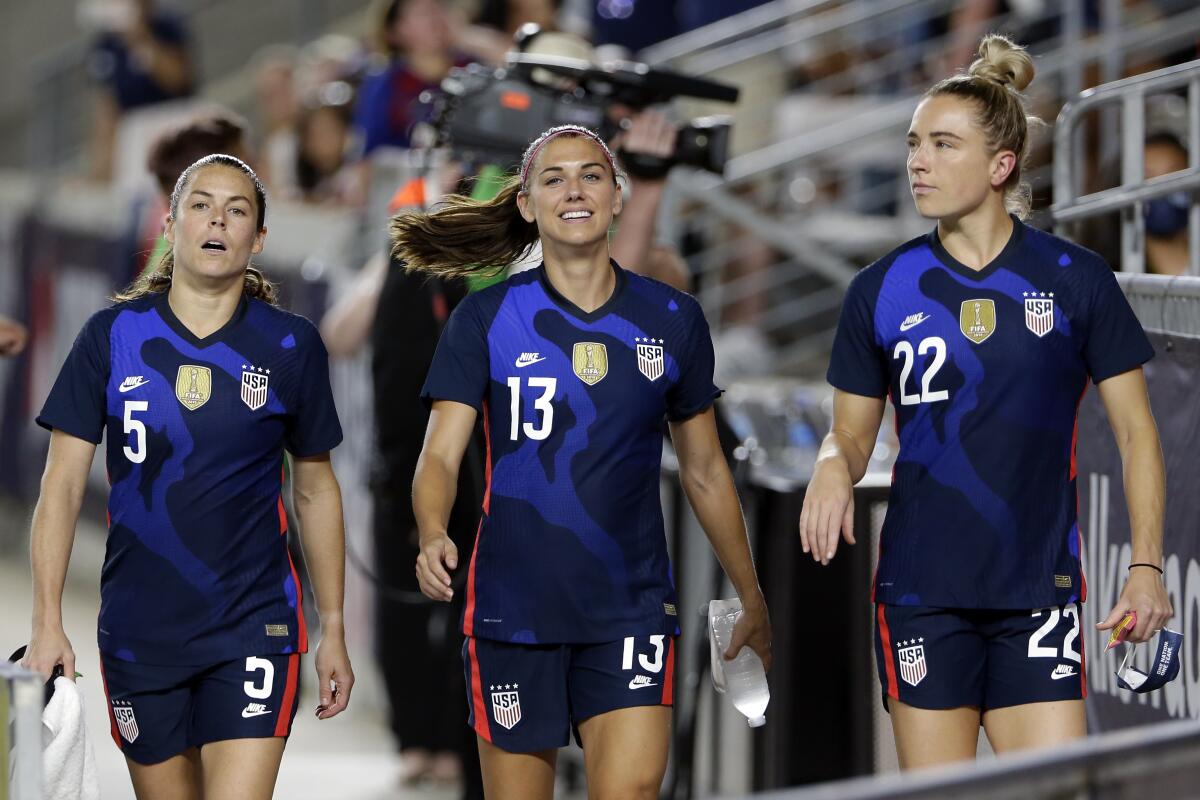
Barcelona, for example, announced last month it will be constructing a natural grass training pitch and providing, for the first time, residential spaces for women at its La Masia training center. This follows a season in which the women’s team scored a treble by winning league, domestic Cup and European titles in the same season.
In England some clubs, such as City and Chelsea, have invested heavily in their women’s teams while others don’t have enough money to keep their fields up to snuff. The result was multiple postponements.
That prompted the New York Times’ Rory Smith to ask last spring why more men’s teams “cut off from success by the economic disparity in the men’s game have not poured more resources into their women’s sides, where glory comes much cheaper.”
Brighton, for example, was playing in the third-tier League One just 10 years ago and never will be able to fund a competitive Premier League side. But its unbeaten women’s team is the early leader in the WSL table.
For a fraction of the money it spends on its men’s roster, Brighton could contend for a women’s title.
Aside from the glory, there’s also money to be made in the women’s game. And that is perhaps the greatest and most important thing that has come out of the gender-equality fight the women’s national team — as well as players in the WNBA and elsewhere — have waged.
Sponsor a men’s team and it’s a business transaction. But when a company decides to support women’s sports it’s often seen as an investment in equality and meaningful change. And that can have a trickle-down effect.
Consider that Barclays, the British bank that is a major sponsor of the WSL. It’s also the lead sponsor of a partnership with the FA dedicated to improving girls’ participation in soccer at the school level. That program eventually will produce more and better players for WSL teams, improve the quality of play and increase the attention the league and its players receive.
As a result, the value of Barclays’ WSL sponsorship will increase, inevitably leading to better pay and working conditions for the women, a rare win-win. Other brands, from LUNA Bar and Secret Deodorant to Nike to Adidas, also have invested heavily in women’s sports by making the association part of their corporate image, an important consideration at a time when consumers say they want to support companies with a social conscience.
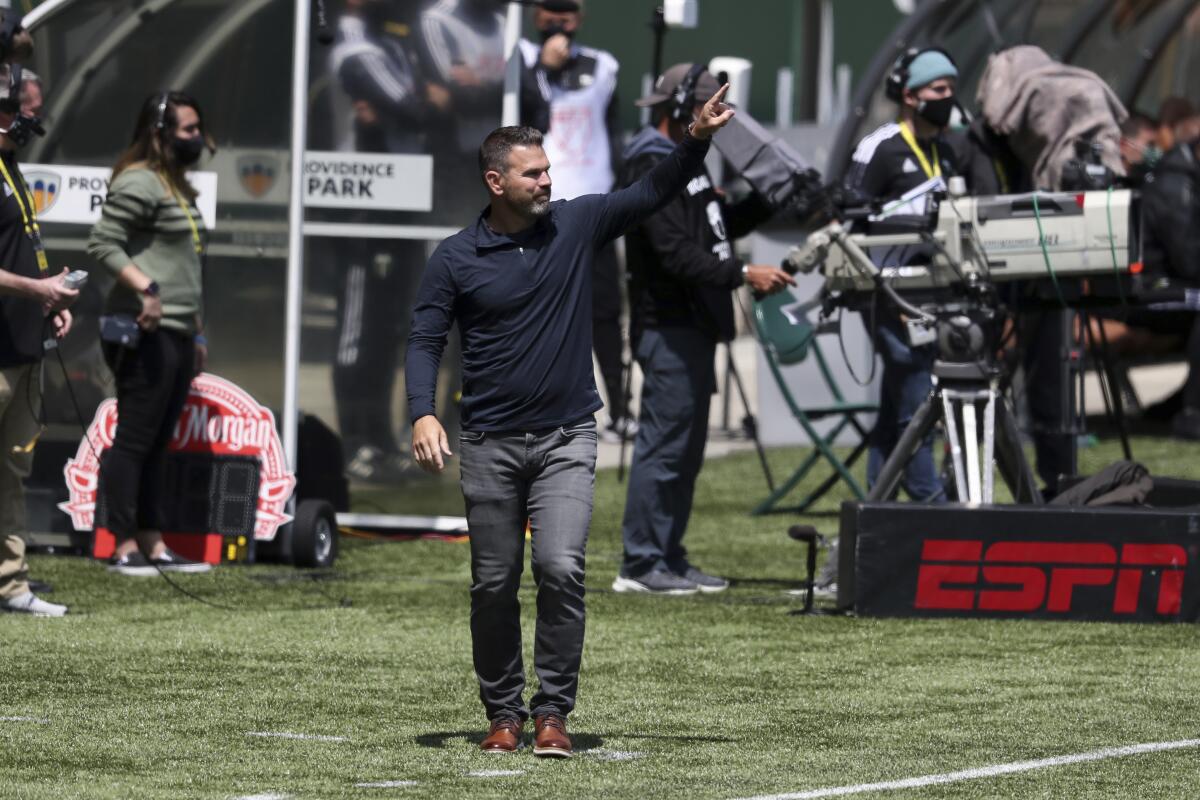
Down the stretch they stumble
The Galaxy have gathered just three of a possible 18 points in a winless streak that grew to a season-long six games in Saturday’s listless 3-0 loss in Minnesota. And with just nine regular-season games remaining, coach Greg Vanney is running short on time if he hopes to right the ship before the MLS Cup playoffs.
“This is where you find out, in these last [nine] games, what this league is really about,” he said. “The first 20 games, some of that is you’re learning the ebbs and flows of the league. You’re learning what the summer grind is about. But the last 10 games is where you find where the level of the league is at and where players are and their readiness to be able to win playoff games, to win championship games.”
Vanney’s team clearly isn’t ready for that. The Galaxy have scored multiple goals just once since July and have given up 12 goals in their last six games. Against Minnesota, the Galaxy had the ball for 60 of the 90 minutes but did nothing with it in managing just two shots on goal. On the defensive end, goalkeeper Jonathan Klinsmann didn’t stop any of the three shots he faced.
But if that’s the bad news the good is the Galaxy (11-9-5) haven’t lost any ground in the standings and remain fourth in the Western Conference table, which would give them a home playoff game if the season ended this week.
“Every team is playing for something now. You’re either playing to get yourself into the playoffs or playing to position yourself in the playoffs or you’re playing to set yourself up to try to win a championship,” Vanney said. “You’re trying to find your level right now, and so every game feels a lot different than it did for the first 20 or so.
“So everything matters and we have to eliminate mistakes. It’s attention to detail. It’s part of the growth of this group that needs to happen.”
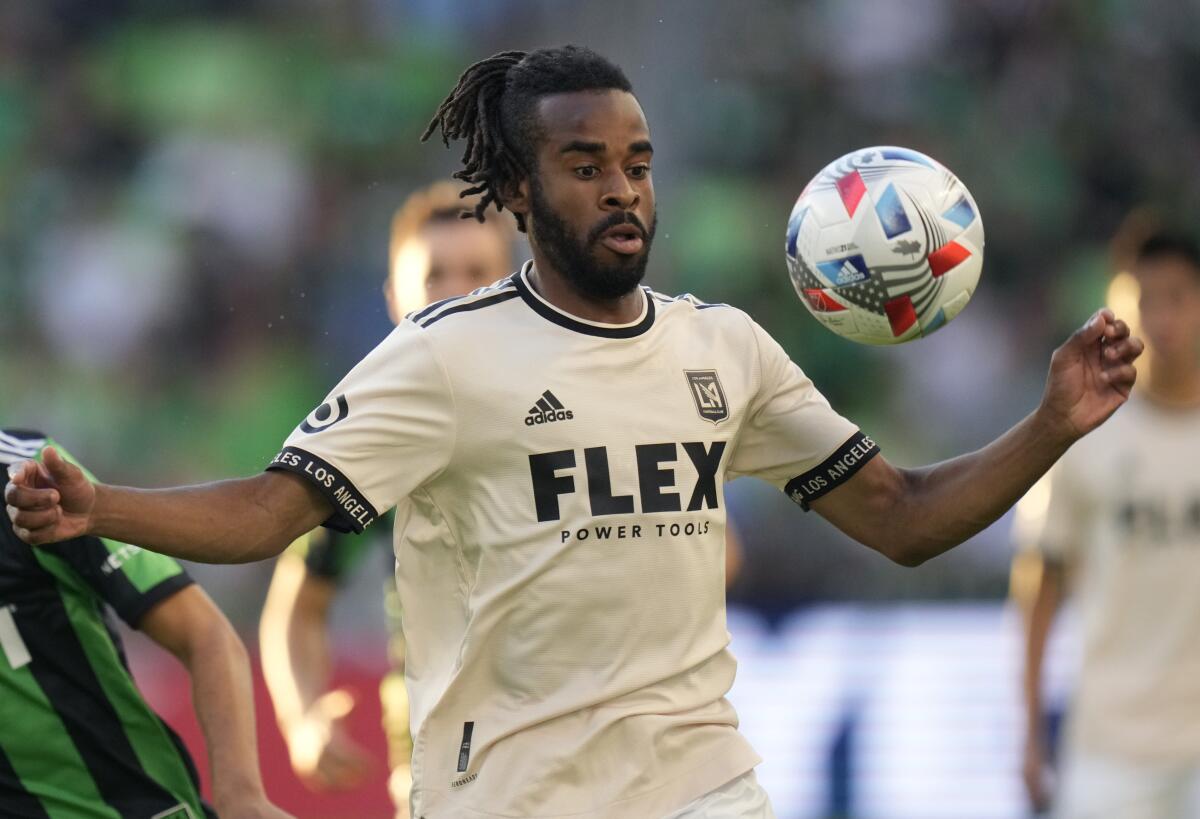
LAFC, meanwhile, continues to hover just outside of playoff contention after Sunday’s mistake-filled, 2-1 loss in Portland. The result snapped a season-long, four-game unbeaten streak and dropped LAFC (9-10-6) to eighth, one place and one point below the playoff line.
“A hard result to take,” winger Raheem Edwards said. “These are important games. We’re coming down to the end of the season.”
LAFC’s only goal came on a first-half penalty kick from Cristian Arango, who extended his scoring streak to five games and gave him a share of the team lead with six goals in eight appearances. But the road ahead is a tough one. Five of LAFC’s final nine games are on the road, where the team is 3-8-1.
“Nine games, nine finals.” Edwards said.
“You have to expect that every game is going to be like tonight,” coach Bob Bradley added after Sunday’s loss, LAFC’s second 2-1 loss in Portland this summer. “Hard games, very competitive where the margin is really small.”
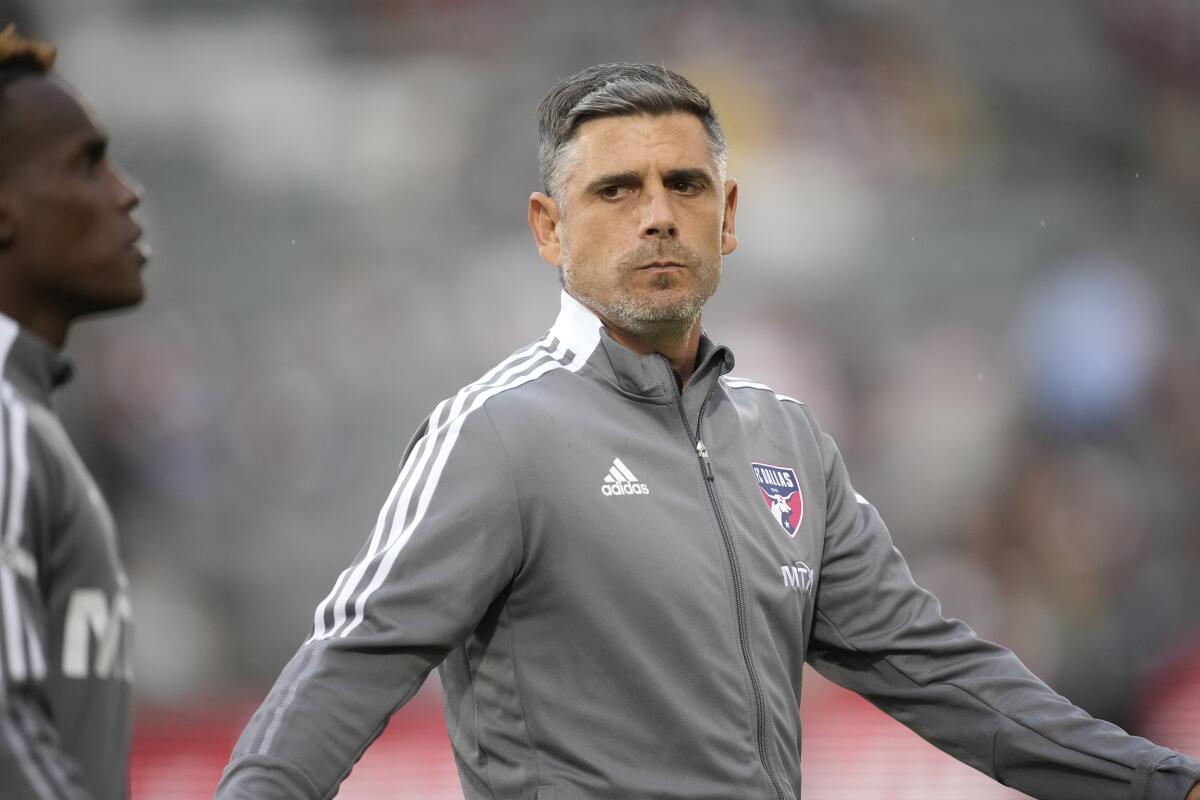
And finally there’s this…
FC Dallas has sacked manager Luchi Gonzalez with eight games remaining in his third season as coach. Assistant coach Marco Ferruzzi will manage the team on an interim basis until a permanent replacement is found. Gonzalez was the architect of the team’s highly successful academy program, which produced the likes of Weston McKennie, Kellyn Acosta and Reggie Cannon. Gonzalez guided FC Dallas to the playoffs in his first two seasons, but the team is 6-11-9 this year and is on pace for its second-worst season in 26 years. The coaching change is the fifth at the top of an MLS team this year.
Podcast
Don’t miss my weekly podcast on the Corner of the Galaxy site as co-host Josh Guesman and I discuss the Galaxy each Monday. You can listen to the most recent podcast here
Quotebook
“If she was a male player anywhere in the world, there’d be statues of her in front of stadiums, in front of sports complexes everywhere. I think that’s what Carli deserves. She deserves stadiums and complexes and fields to be named after [her]. I mean, she’s a legend, an absolute legend.“
USWNT coach Vlatko Andonovski, in Front Row Soccer, talking about the retiring Carli Lloyd
Until next time...
Stay tuned for future newsletters. Subscribe here, and I’ll come right to your inbox. Something else you’d like to see? Email me. Or follow me on Twitter: @kbaxter11.




